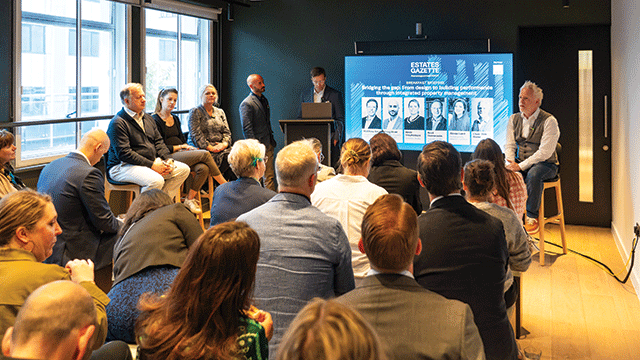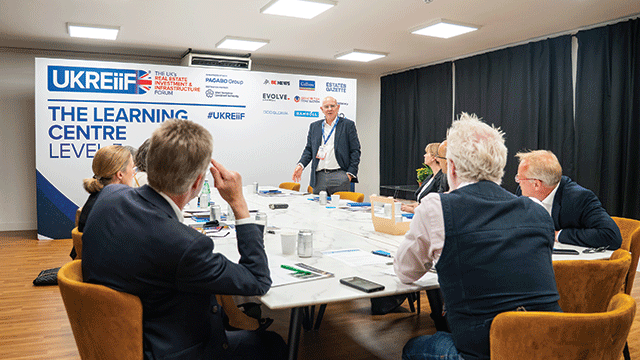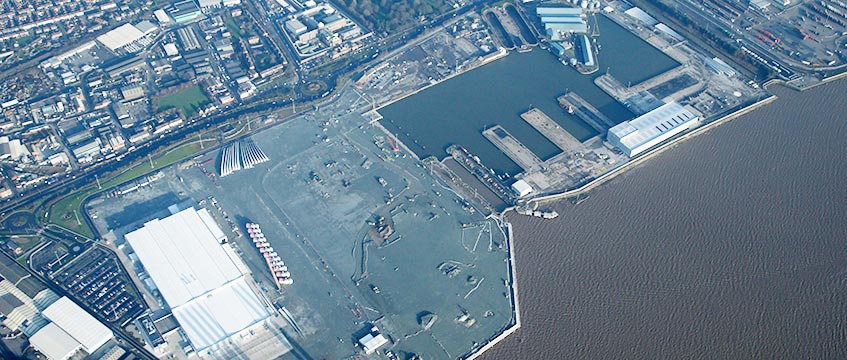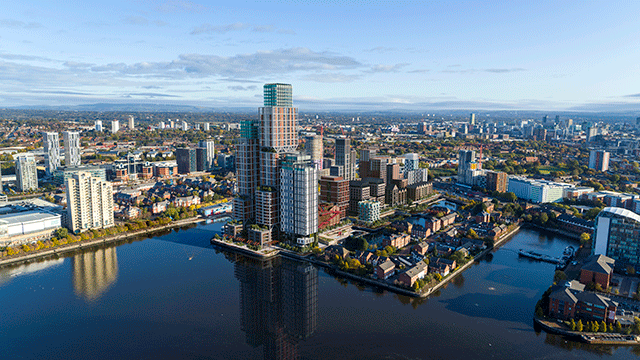Like many of the businesses operating out of the port of Hull, Intergreen has strong Dutch connections. It imports flowers, trading lovely blooms out of Amsterdam, creating premium-price bouquets with choice specimens (many of which they have imported from Kenya). Faced with a bouquet bulge in the run-up to Mother’s Day in March, it needed some extra Hull floorspace. Strictly short-term.
This ought to have been relatively easy, but it wasn’t. In the end, Intergreen found 150,000 sq ft at LC Industrial’s Humber Enterprise Park, part of the enterprise zone. The firm took the space for three months, and it cost a premium rent. For the landlords – LC Industrial is a tie-up between LRE Capital and Leeds-based business specialist Citivale – the short-term deal came at a convenient time. It followed the same unit’s short-term lease with construction giant Howdens. Howdens had the unit for 18 months and it too paid a premium rent. Everyone is cagey on what premium means exactly, but at a site where £2.50 per sq ft is standard, a figure of £4.50 per sq ft would be very premium indeed.
“Pressure of demand from port-related businesses means rents are rising,” says James Appleton-Metcalfe, managing director of Citivale. “We are also seeing a variety of other businesses moving in – manufacturers, engineering, call centres – all of which is partly a function of having space (and another 20 acres for design and build, in a market where there’s not a lot [of space] available), and there is also a skilled workforce on the doorstep.”
Humber Enterprise Park totals 1.3m sq ft of high-quality office and industrial space and 20 acres of development land. The site benefits from Enterprise Zone and Assisted Area Status, which offers significant incentives to attract new occupiers.
The site was once a BAE aircraft facility, and plenty of occupiers are attracted by that heritage. But plenty more come from the port.
“One of our largest deals last year was to a Dutch importer – called Dutch Imports – which took 230,000 sq ft freehold,” says Appleton-Metcalfe. “That is typical of Hull, with its strong European links.”
Details of the deal were not disclosed, but local sources estimate a sale price a shade under £6m.
Rising rents help in a market that – as yet – scarcely justifies speculative development. “I don’t think you could do it without some kind of public sector support – demand is probably there for new space, but it is largely untested,” says Appleton-Metcalfe.
The race for space in Humberside comes as the UK’s ports adapt to changing business patterns. Brexit could disrupt trade with Europe, and a long-term switch from bulk imports to containerised traffic means more intensive supply chain activity in the port’s margin. Ports have been investing in new dock-handling equipment and facilities, such as Hull’s new all-weather cargo terminal.
Chris Evans is a specialist consultant in port development and port economics working with Colliers International. He says there is scope for new development on the coat-tails of renewed investment in port facilities. A hard-Brexit trade deal that saw special trading zones created around ports could also stimulate development.
“There are some significant prospects arising thanks to long-overdue changes, replacing infrastructure, and some would say neglect,” he says. “In the Humber ports the growth of green energy is a real opportunity, while water-born trade is growing as far inland as Goole.”

Growth at locations such as Goole will depend on the right dockside cranes – and the Northern Powerhouse initiative could help focus minds on the potential benefits.
Container traffic is already diverting to Immingham, says Evans, and the scope for port-centric property development is real.
“There is plenty of developable land – more than people realise,” he adds. “We are already starting to see interest in sites around Goole, which is being encouraged by the new intermodal terminal, resurrecting a facility that was done away with only 30 years ago.”
However, Evans say the big issue for the Humber ports is its connections to the main Midlands distribution hubs.
“It’s all about getting the goods into central England. The main competitor here is Felixstowe and – when it comes to getting goods directly into the main highly-populated markets – Liverpool and London Gateway.
“I expect London Gateway to power ahead over the next year or two,” says Evans. “It is already winning new services; while Felixstowe is well located for vessels it is not so well located for access to markets, and its facilities are not as modern.”
The joker in the pack could be Tilbury, says Evans. Although it is older than London Gateway and Felixstowe, it could give the two southern rivals and the Humber ports a run for their money as the port refocuses towards roll-on, roll-off.
Tilbury has already scored a mighty hit with Amazon’s decision to take 2.2m sq ft at Roxhill and Port of Tilbury’s 70-acre London Distribution Park. It will be the first four-storey distribution centre in the UK, forward funded for £150m by Legal & General through its annuity fund. The Amazon rent is around £3.60 per sq ft.
Further growth is likely following the launch last month of a new shared strategy for all the London ports. Thames Vision, a 20-year development framework for the river, shows that port trade could grow by as much as 30 million tonnes to 80 million tonnes over the next 20 years. Last year trade on the Thames increased by more than 10% to 50 million tonnes.
“Yes we will see more development around ports – but not just logistics. Look out for the creation of free-trade zones around ports, which will open up the prospect of port-centric manufacturing as well as port-centric logistics,” says Evans.
If the Humber ports can ride this wave of new thinking, their future is assured.
Main image: David Lee Photography
Southern rivals
The Humber ports’ big rivals are all in the south.
Felixstowe is the leader of the pack for container traffic. It has a strong record and is making new route signings. Regular services connect the port of Felixstowe with more than 700 ports worldwide and there are 33 daily rail freight services to 16 inland destinations.
After a slow start, DP World’s London Gateway is signing more shipping business. In March, global container shipping consortium The Alliance announced that all its mainline UK calls will be handled by DP World. Earlier it signed a deal cutting transit times between Central America and North Europe via a hub in Kingston, Jamaica.
The port is also integrated with DP World London Gateway Logistics Park, which provides more than 10m sq ft of supply chain and distribution space for retailers and logistics firms such as Lidl and UPS, who are already on site.
Work is now under way to create 180,000 sq ft of new, cross-dock distribution warehousing and office space at DP World London Gateway Logistics Park.
Hull goes Dutch…
Hull has always had a strong Dutch connection – as have many of the East Coast ports handling container traffic moving (ultimately) via Rotterdam. The Humber ports have also picked up the traditional connection with the Baltic more usually associated with the Tyne ports. Imports of bulk materials – especially timber and paper – dominate and Hull’s Finland Terminal, which specialises in paper, is over 700,000 sq ft. Container and bulk connections pre-dated the European Union and will outlast Brexit, but volumes will be down if Brexit turns nasty. Unfortunately, neither has much impact on the local property market – goods come in, and they go out, barely touching the town.
However, Hull is lucky to have a diverse profile: it is the region’s largest passenger terminal, with roll-on, roll-off and cruise capacity. It is also diversifying into green energy projects. Owner ABP Humber is working with Siemens on the £310m Green Port Hull, which will see wind turbines assembled and serviced at the Alexandra Dock. The port totals 3,000 acres and carries 10m tonnes a year.
Nearby Immingham is expanding its container traffic: new signings mean traffic at Immingham’s Container Terminal is growing from nine to 11 calls per week. The facility operates on a 24/7 basis.
Less bulk, more containers
The volume of UK port traffic is falling as trade moves from bulk goods, such as coal, to containers. In 2016 tonnage slipped another 3% to 473.5m tonnes but container traffic increased 1% to 23.8m units. Hull handles more than 100,000 container units a year.
Facts and figures
Humber ports trade in 2005 and 2015 (million tonnes)
| 2005 | 2015 | |
|---|---|---|
| Goole | 2.62 | 1.32 |
| Hull | 13.36 | 10.03 |
| Grimsby & Immingham | 60.68 | 59.10 |
Source: Department for Transport, maritime statistics











